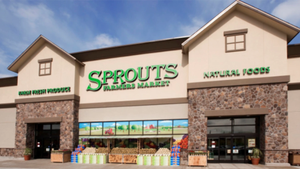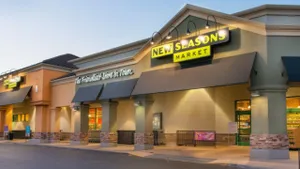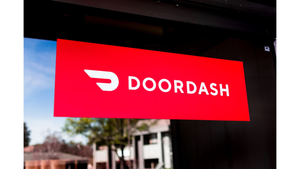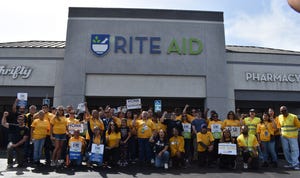NGA EXECUTIVE MANAGEMENT CONFERENCE 2006-10-16 (1)
INDIAN WELLS, Calif. - There's more than one way to compete with Wal-Mart and succeed, according to several independent operators and a wholesaler who have done so.In a series of presentations here at last week's Executive Management Conference sponsored by the National Grocers Association, Alexandria, Va., four retailers and the wholesaler offered their stories:Leo Braido, director of sales and marketing
October 16, 2006
ELLIOT ZWIEBACH
INDIAN WELLS, Calif. - There's more than one way to compete with Wal-Mart and succeed, according to several independent operators and a wholesaler who have done so.
In a series of presentations here at last week's Executive Management Conference sponsored by the National Grocers Association, Alexandria, Va., four retailers and the wholesaler offered their stories:
Leo Braido, director of sales and marketing for Riesbeck's Food Markets, St. Clairsville, Ohio, said his company has narrowed the price gap with Wal-Mart by negotiating trade rates with vendors.
Roger Collins, chairman, president and chief executive officer of Harps Food Stores, Rogers, Ark., said his stores compete by stressing the quality differences of their perishable offerings, primarily meat.
Roger Lowe, vice president and CEO of Lowe's Supermarkets, Littlefield, Texas, said his stores use a combination of everyday low prices and strong promotions to hold off Wal-Mart.
Dick Casey, president of CNW Foods, Joplin, Mo., said his two Food 4 Less stores follow a strict pricing regimen.
Ron Brake, owner of two Food 4 Less stores in Portland and Gresham, Ore., said the Portland store has thrived by catering to the needs of the Asian and Hispanic populations that surround it.
Steve Dillard, vice president, education and strategic planning, Associated Wholesale Grocers, Kansas City, Kan., said retailers are seeing sales grow by adding dollar sections and fuel stations.
Braido said Riesbeck's has narrowed the gap with Wal-Mart by letting vendors know it wants to determine a trade rate for each item and then buy at that rate on an everyday basis, "which doesn't change the vendors' fees but allows us to lower our cost to stay within 6% to 10% of Wal-Mart."
He said the 15-store operator gets the trade rate on 11,200 items, "and that's enabled us to become an option to shop for more people."
Riesbeck's is in the third stage of dropping its private-label lines to EDLP levels, "but we've had mixed results so far because we aren't able to get enough spread with the national brands to attract consumers to private label. But private-label sales are up 11% since we started this program last year."
The company hopes to add HBC items to its EDLP program, Braido said.
Communicating Quality
For Harps, the most powerful tool it has found to compete with Wal-Mart is differentiating its meat offering, Collins said. That effort got off to a rocky start in 1998, when the 52-store chain promoted its Choice beef program in contrast with Wal-Mart's Select, "but customers didn't understand the difference," Collins said.
However, when Wal-Mart switched to case-ready beef in 1999, Harps grabbed the opportunity to introduce a series of ads with the tagline, "Where's the Butcher?" - a takeoff on the "Where's the Beef?" ad campaign - "and our meat distribution picked up," he said.
When Wal-Mart started adding water to its beef "to keep the price down," Collins noted, "we developed ads built around the theme of 'No solution added,' and when we learned the water it was adding contained sodium, we began promoting the lower-sodium content of our meat."
"Differentiation usually costs money, and customers may not be willing to pay for that differentiation," he said. "But if you can communicate the differences in quality, then you can differentiate yourself from Wal-Mart."
Harps has subsequently carried the effort over to encompass produce, baked goods and deli meats, Collins said, with great success.
Keeping Costs Down
According to Lowe, the 81-store Lowe's chain has evolved into a hybrid EDLP and high-low operation.
It keeps costs down by maintaining low overhead at its offices and utilizing technology to operate more efficiently, Lowe explained. It also eliminated district managers in favor of assigning one store manager to run his own store and oversee seven others "because district managers were losing touch with retail within six months of being promoted," Lowe pointed out.
Lowe's does not have any of its own buyers, he said, relying instead on its wholesaler, Affiliated Foods, Amarillo, Texas, to handle all buying. It also has its own dairy and bakery, "and we football milk prices and sell baked goods cheaper than Wal-Mart can buy them for," he added.
The company maintains 3,000-5,000 items as temporary price reductions for 30-60 days, Lowe said, and it rotates another 250-300 items every nine weeks with guaranteed low retails in a program that gives fair or equal treatment to branded and private-label products; it also features one key item at the front of its stores - the first thing a customer sees - with a guarantee it will not be undersold on that item, he pointed out.
"We tag all reduced-price items with identical tags, regardless of which program they're on, because it helps us blend margins," Lowe explained. "In addition, when we used to use different colors for different types of reductions, it made it too easy to cherry-pick our stores."
Lowe's also runs a wall of values at conventional as well as price-impact formats, "because the warehouse shelving creates a strong price image," he said. "We also have big dollar walls at all stores with nonfoods and HBC items. In fact, the $1 items have revived the HBC category in our lower-income areas, where there's no brand loyalty and where customers are just looking for great prices," he noted.
Casey said his Food 4 Less stores have survived against multiple Wal-Mart supercenters "because we established ourselves as the low-price retailer before the first supercenter opened and never gave up that position."
Food 4 Less sticks with the basic tenets of price-impact stores, Casey said "and that has saved my britches."
He also keeps a tight rein on costs and eschews print ads, with only occasional TV spots. "But we use electronic signs in front of the stores to feature four items at a time, and we let people know we cut meat fresh, while Wal-Mart buys it pre-cut," he pointed out.
Local Merchandising
Brake said his Portland Food 4 Less store caters across all departments to the Hispanic, Vietnamese and Chinese population that surrounds it, with additional merchandise to meet the needs of a growing number of Russians and Ukrainians moving into the area. "Most chains believe you appeal to ethnic groups with the dry grocery section only, but the reality is, it needs to be all over the store, with meat and produce typically the most important sections," he pointed out.
He said grocery distribution at the store is shrinking below 20%, with meat up to 26%, produce at 24% and ethnic foods at 8.5%. Produce will probably pass meat within the next year, he added, and seafood sales will be larger than red meat.
His most valuable allies have been local vendors - the same ones who supply Asian specialty stores and Hispanic bodegas in his neighborhood. "I trust them to supply us with the items that will sell," he said.
According to Brake, the more Wal-Mart seeks to change its image to cater to different demographic groups, "the better it will be for all of us."
Dillard suggested retailers consider adding dollar sections to their stores - in separate areas rather than integrated, he pointed out, "because in-line programs allow customers to think adjacent items are over-priced, and the impact is not as great."
He said cannibalization of private label, which is a concern in dollar merchandising, has been less than 10%, with sales of food and nonfood items coming in at about 1.5% of total store sales, though they can go as high as 3% to 4%, he noted.
Dillard also said fuel sales are a strong selling point for a supermarket, particularly when operators allow shoppers to earn discounts on gasoline purchases while shopping in the store, "because consumers perceive fuel discounts as having greater value than any other discounts in the store."
He said retailers that cross-merchandise with fuel have experienced sales lifts of up to 22%.
About the Author
You May Also Like






